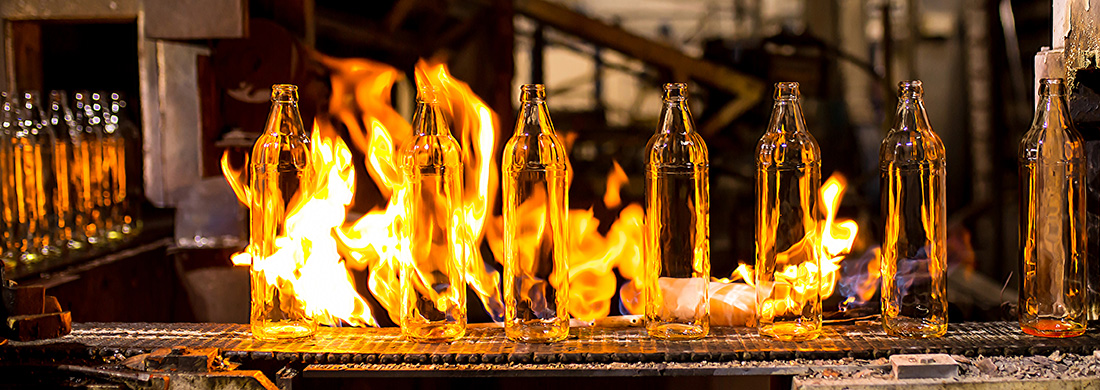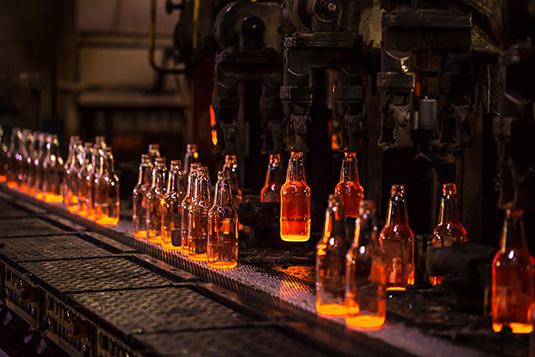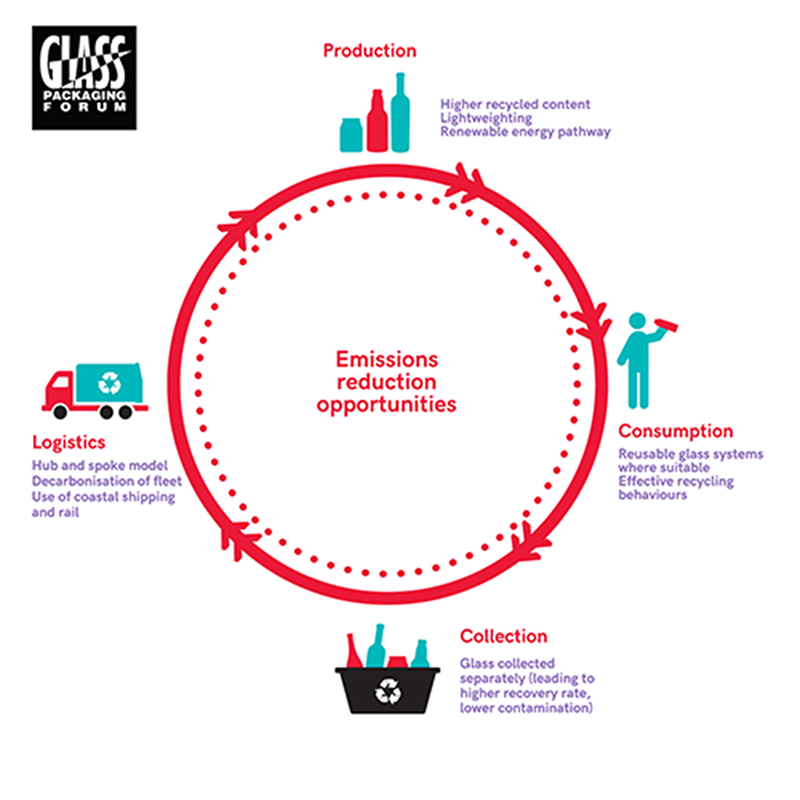
The path to decarbonising container glass

Glass has some great sustainability credentials – it’s infinitely recyclable, is highly reusable and as an ‘inert’ material, doesn’t create environmental damage when it degrades. It’s ‘Achilles’ heel’ though has always been the emissions from its production. But this is beginning to change.
Worldwide, consumers are demanding greater sustainability from their packaging. A heightened awareness around climate change means the demand is for packaging that’s not only reusable and recyclable, but which has a low carbon footprint too.
The cost to businesses for offsetting their emissions through carbon credits is also a significant driver. As a result, container glass manufacturers are investigating ways of substantially reducing the emissions from their operations, even to the point of carbon-neutral glass.
Why is glass so emissions heavy?
The base recipe for making glass bottles and jars has changed little over its long history – silica sand, soda ash and limestone. Examples of glass objects have been dated back as far as 3,600 years.
Creating glass from these natural ingredients requires a huge amount of heat and means a glass furnace must burn at around 1,500 degrees Celsius. Reaching this temperature results in the high carbon emissions as traditional glass furnace technology is powered by fossil fuels.
In Aotearoa New Zealand that means natural gas. This already puts us in a better position than overseas manufacturers, where furnaces older than 10 years run on coal and fuel oil, which is more than twice as emissions heavy as gas. This should be a consideration for businesses relying on imported glass for their products.
There are also emissions produced as a result of the ingredients being processed and releasing the carbon they have stored in them.
The transport of glass must also be taken into account. Being heavier than other packaging materials means more emissions are generated here too.

Hierarchical approach
Reducing emissions from container glass can be viewed through a waste hierarchy lens, with reduce and reuse at the top.
Reduction can come in the form of bottle light weighting – which is already in use – and involves designing containers to use as little material as possible. There are of course limits and care must be taken not to light weight a container to the point where it fails easily, causing the loss of the container and its contents.
In the case of container glass, reduction and reuse go hand in hand. Glass is easy to sterilise and containers can often be reused multiple times. New Zealand’s ABC Swappa Crate beer bottle refill scheme reports each of its bottles prevents the use of 39 single-use glass bottles of a similar size over its lifetime.
A report which looked at 32 life cycle analyses, found refillable glass bottles (on average) have 85% less emissions than single-use glass bottles.
Reloop & Zero Waste Europe (Reusable vs single use packaging: A review of environmental impacts)
It should be noted no definitive analyses have been done of the environmental impacts in New Zealand from refill schemes.
Recycling
Increasing the recycled content of new bottles reduces emissions. This is because using recycled glass (cullet) means the furnace can run at a lower temperature, saving emissions from energy.
The need for virgin materials, which must be mined and transported, is reduced too. In New Zealand we import the raw materials (such as sand from Western Australia), so any reduction from increasing recycled content is valuable. Virgin materials also release their stored carbon while in the furnace, while the recycled glass does not.
Overall, every tonne of glass recycled saves approximately 670kg of CO2 over virgin materials.
For this reason, food and beverage producers verifying the recycled content of the glass they are using, whether locally manufactured or imported is vital. For example, while it may vary from manufacturer to manufacturer, glass from China generally has a lower percentage of recycled content than glass from the Europe.
An important aspect of increasing recycled content is ensuring a clean, uncontaminated material stream. Most councils offer a kerbside recycling service which collects glass separately to other recyclables. This is best practice as it prevents contamination and increases how much glass is available for recycling.
The few remaining councils offering a co-mingled (everything in one bin) option though, account for nearly half of all New Zealanders who have access to kerbside recycling.
For a variety of reasons, a handful of councils also send glass that could be recycled to aggregate or other uses. As part of a report for the Glass Packaging Forum, Grant Thornton found this had a much higher carbon footprint than transporting the glass for recycling.
Logistics
The weight of glass and the shape of the containers mean processes need to be in place to make transport as efficient as possible.
The glass hub at 5R Solutions in Christchurch is a good example. Glass from around the South Island is transported to the hub where a loading system with a built-in bottle breaker means glass can be shipped in bulk to the furnace in Auckland.
Promoting and enabling this ‘hub and spoke’ model is something the Glass Packaging Forum has focused on over the past years.
A recent study in New Zealand shows coastal shipping produces 20% of the carbon emissions (wheel-to-wheel) of road freight. Rail also performed well, with about 25% of trucking emissions.
These are already being used by 5R’s Christchurch hub, but opportunities also exist in other parts of the country.
Technology of the (near) future
The largest gains in emissions reduction will come from decarbonising furnaces. Europe is currently leading the charge in developing alternatives, such as all-electric, hydrogen and hybrid furnaces.
A project involving 19 European glass manufacturers worked on a hybrid furnace concept, which they committed to invest in, but failed to secure the required European Union grant to move forward.
In the United Kingdom a hybrid hydrogen-powered furnace is expected to begin operation in 2027. By 2030 its operators expect to produce 200 million net-zero bottles for the alcohol industry each year.
The furnace will use hydrogen and ‘green electricity’ to reduce emissions by 90%. By 2030, carbon capture technology is expected to eliminate the remaining 10% of emissions.
As New Zealand seeks to decarbonise, glass, despite its challenges, also offers many opportunities.


